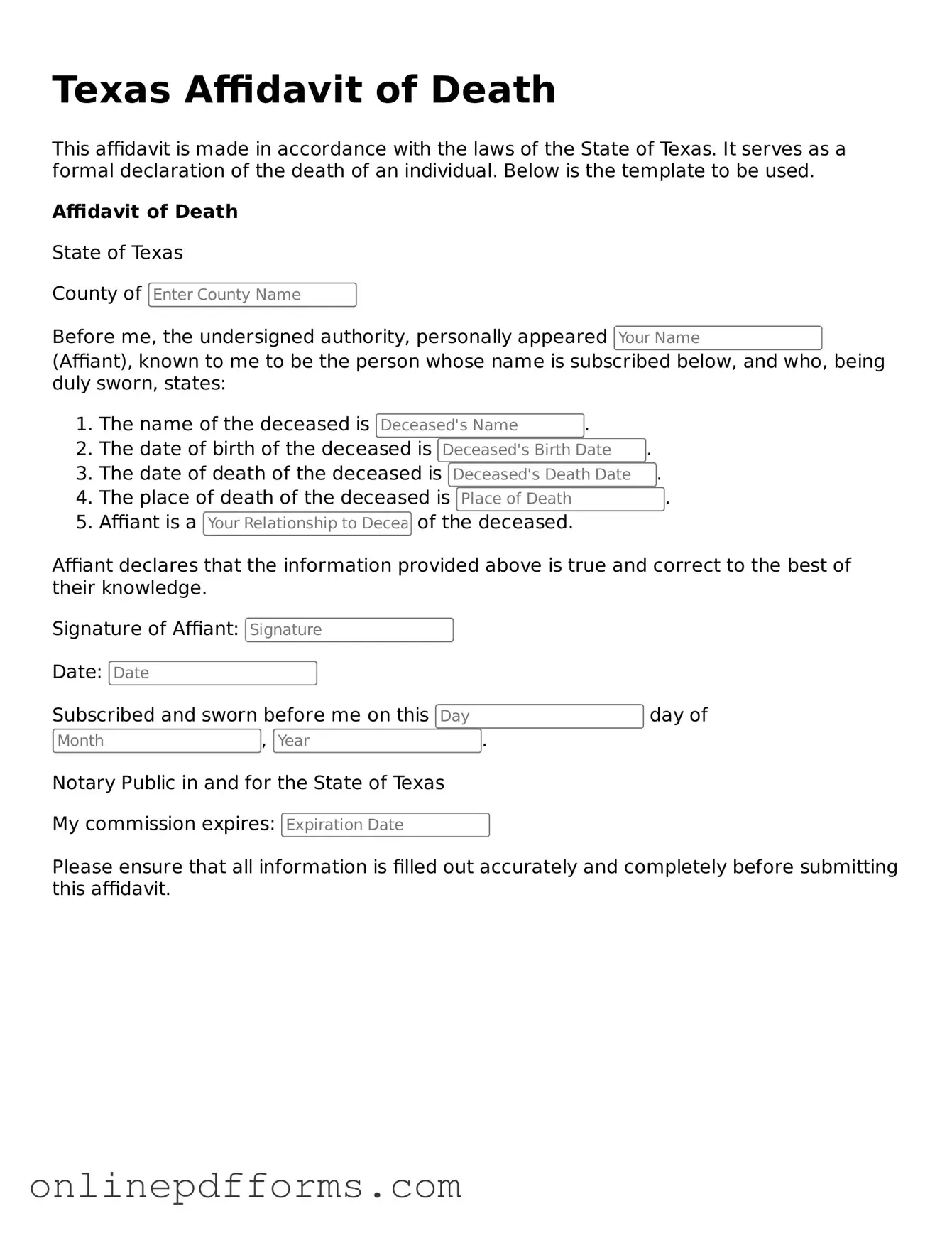Steps to Filling Out Texas Affidavit of Death
Once you have gathered the necessary information, you can begin filling out the Texas Affidavit of Death form. Completing this form accurately is crucial for ensuring that the legal process moves forward smoothly. Follow these steps carefully to provide all required information.
- Start with the title of the document at the top, which should read "Affidavit of Death."
- In the first section, write the full name of the deceased individual.
- Provide the date of death. This should be the official date recorded on the death certificate.
- Include the place of death. Specify the city and county where the deceased passed away.
- Next, fill in your name and address. This identifies you as the affiant, the person making the affidavit.
- State your relationship to the deceased. This helps establish your legal standing in the matter.
- Sign and date the form in the designated area. Make sure your signature is clear and legible.
- Have the affidavit notarized. A notary public must witness your signature and provide their seal.
After completing the form, you may need to file it with the appropriate court or agency, depending on your situation. Ensure that you keep copies for your records and follow any additional local requirements.
